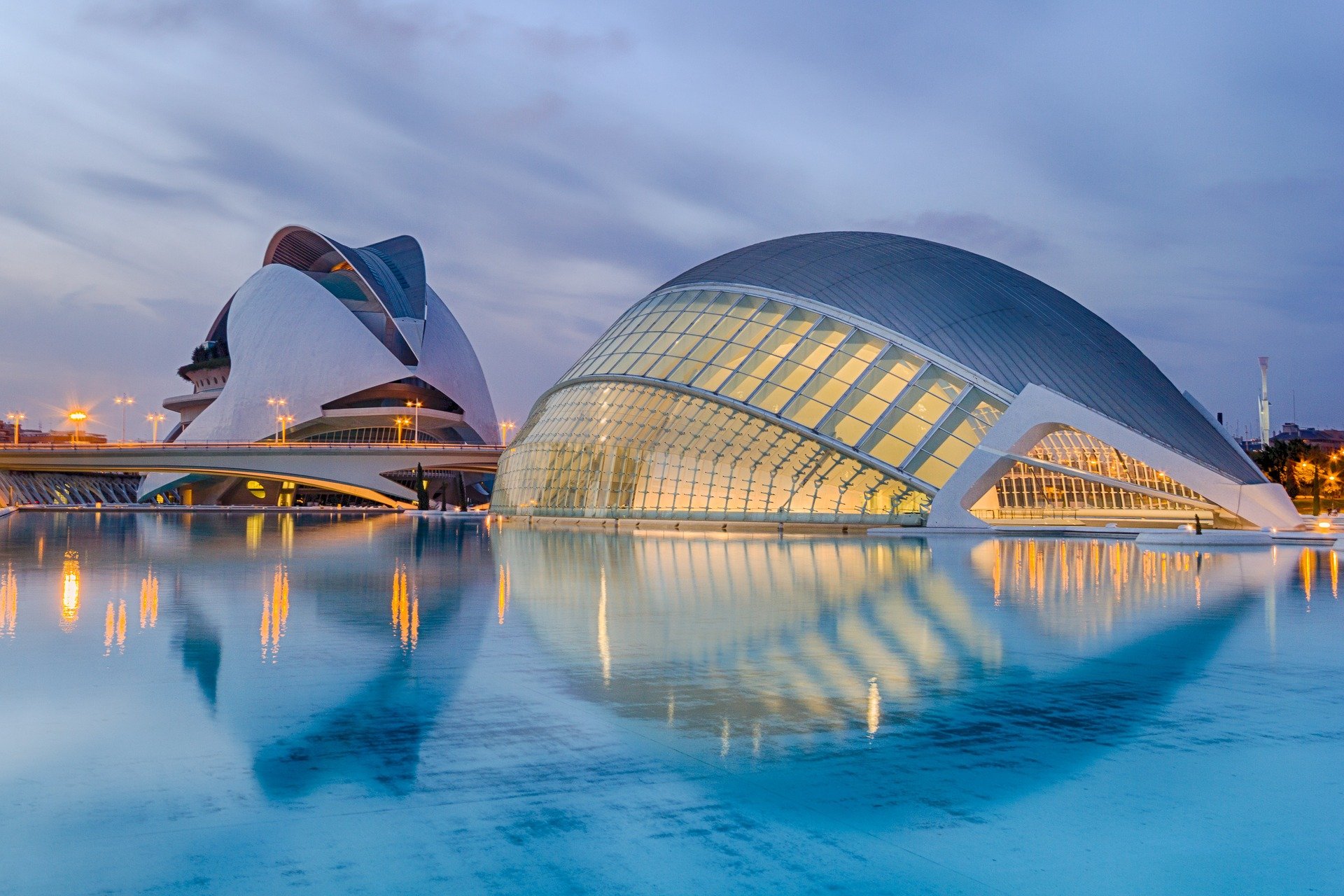Situated on Spain’s east coast, in a dreamy seaside setting, Valencia has so much to offer. This Mediterranean port city is the third-largest city in Spain, and it has everything you need to experience a slice of Spanish life. There’s plenty to do to suit budgets of all sizes.
Whether you’re staying in a luxury five-star hotel, or in a hostel to save money in the travel with friends, this vibrant city has it all. From world-class restaurants and stunning beaches to grand museums and lively nightlife, you’re sure to have an unforgettable experience in Valencia.
Valencia is bursting with history and cultural heritage, as it was once the old capital of the Kingdom of Valencia. There are some outstanding historic monuments situated throughout the city, such as the 14-century Torres de Serranos and the 18th-century Marquise Palace. But, Valencia also has plenty of modern sights to see too. The contemporary Modern Art Institute, along with the City of Arts and Sciences, immerse travellers into a new age of art and scientist discovery.
Whatever you’re looking for in a city break, you’ll also find some unforgettable cultural experiences that are all Valencia’s own. Here’s our guide to the places you just can’t miss out on.
Torres de Serranos
This impressive landmark is regarded as a symbol of Valencia. Situated where Valencia’s Old City gives way to the Turia gardens, the Torres de Serranos is a former gateway through the ancient city wall, ‘la Muralla Cristiana.’ The town ramparts were built in the 14th century on top of old Roman foundations, and in 1930, they were restored to their former glory. These historic towers can be explored, and make for stunning views (perfect for photos) of Valencia’s cityscape.
Palacio del Marqués de Dos Aguas (Marquise Palace)
The Palacio del Marqués de Dos Aguas is a stunning 18th-century aristocratic mansion that is renowned for its decorated facade and ornately carved alabaster doorway. This palace now hosts the National Ceramic Museum that opened in 1947, which contains more than 5,000 examples of traditional Valencian pottery.
The Marquise Palace also has other interesting ceramic items on display, such as ancient Greek, Roman and Arab pottery, Porcelain from Japan and China, and more modern pieces from the likes of Picasso. One of the main sights in the Palace is a fully-equipped 19th-century Valencian Kitchen featuring traditional tiles. The Marquise Palace is not only a sight to see on the outside, but there’s plenty of interesting items inside to view for pottery enthusiasts.
Turia Park
Not only is Turia Park, or Jardines del Turia, one of Spain’s largest urban parks, but it’s also not your average city park. Turia Park, Valencia was a former riverbed that has been converted into a green space full of footpaths, playgrounds, sports facilities and picnic spots.
Turia Park snakes its way through Valencia’s city centre, all the way from the Bioparc to the City of Arts and Sciences, and then on towards the Meditteranean Sea. Crossed by 18 bridges full of history, it also passes by lots of main museums and historical sites, such as the Torres de Serranos on either bank. If you want to know the park’s opening hours, and how to get there, VisitValencia has plenty of useful information on their website.
Ciudad de las Artes y las Ciencias
If you want to experience cutting-edge art and science, then the City of Arts and Sciences is the place to visit. This futuristic complex on the outskirts of Valencia is one of Europe’s most impressive centres, and it is solely dedicated to cultural and scientific conferences, workshops and exhibitions.
The buildings in the City of Arts and Sciences are stunning examples of architecture themselves, that were designed by architects Santiago Calatrava and Félix Candela. In the complex, you can find the Hemisfèric IMAX Cinema, the Umbracle landscaped area, the Príncipe Felipe Science Museum, the Oceanogràfic aquarium, the Reina Sofía opera house and the Agora concert space. All of which are guaranteed to keep arts and science fans entertained for hours.
La Lonja de la Seda
La Lonja de la Seda is a magnificent Medieval structure that was built in the 15th century to house Valencia’s Silk Exchange, the marketplace where Valencian silk was traded to be sold all over Europe. Today, it is one of the city’s main attractions and is famously one of the very few non-religious examples of Gothic architecture across the continent.
Visitors can climb the 144 stone steps of the tower’s helical staircase, and from the top, the views of the city are stunning. It’s no surprise that La Lonja de la Seda is deservedly a UNESCO World Heritage Site.
Institut Valencia d’Art Moderne
The Valencia Institute of Modern Art is housed in a futuristic Space-Age building that is dedicated to the art of the 20th century. When it first opened in 1989 it was Spain’s first modern art museum. Now it’s permanent collection focuses on Catalan iron-work sculptor Julio González, with almost 400 pieces housed in the Institute. The museum also boasts hundreds of other works from world-famous 20th-century artists. Besides art, a hidden historical gem can be found in an underground room of the Institute, which reveals ruins of Valencia’s medieval city wall that were uncovered during the museum’s construction.



 Bitcoin
Bitcoin  Ethereum
Ethereum  XRP
XRP  Tether
Tether  Solana
Solana  USDC
USDC  TRON
TRON  Lido Staked Ether
Lido Staked Ether  Cardano
Cardano  Avalanche
Avalanche  Toncoin
Toncoin